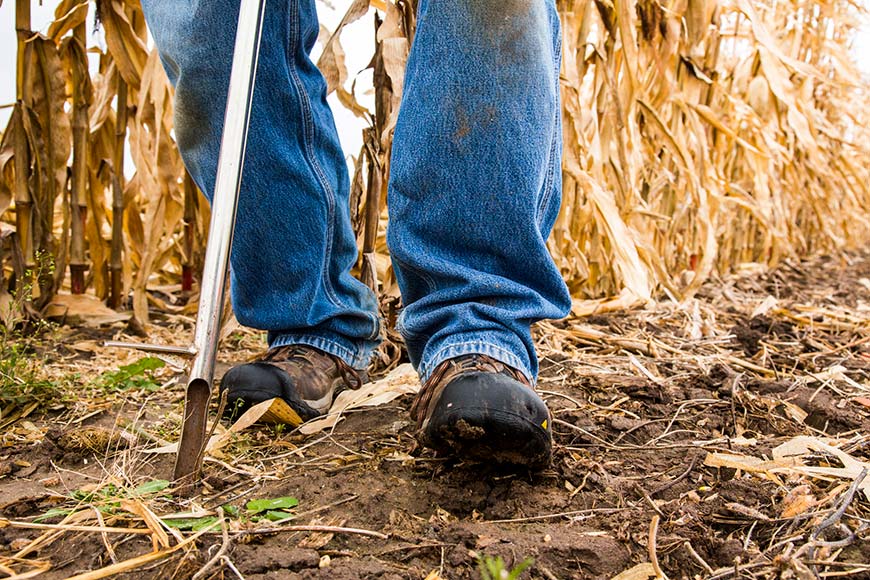3 Tips for Preparing a Nutrient Management Plan

Planning for the 2022 season begins this fall, and a good place to focus your efforts is revisiting your nutrient management program. While the season is still fresh in your mind, think about what you’ll need to do to ensure your crops have what they need to thrive next year. Fall soil sampling and nutrient applications are tasks that can be completed after harvest to get a jump start on the spring. Here are some other tips to fine-tune your nutrient management plan.
1. Consider your crop plan
As you develop a nutrient management strategy, you’ll need to revisit your crop plan. Will you change your rotations? If so, that could change your fertility program. Consider your seed choices as you make fertilizer decisions as well. Higher-yielding hybrids and varieties require more intense fertilization, and some hybrids are more responsive to nitrogen fertilization than others. Ask your agronomist for fertilization recommendations as you make your seed decisions.
2. Sample your soil and your plants
If it’s been several years since you’ve taken a soil test, it’s time to get an updated analysis done. Soil sampling is key to understanding what the baseline nutrient levels are in your soil. It can help build the foundation for an effective fertility plan. If you tissue sampled at critical growth stages this season, be sure to use those findings to inform your nutrient plan for 2022.
It’s a good idea to look at past soil and tissue sampling results to help identify trends you may see over time. For example, if one part of a field is deficient in nitrogen every year, there may be things you can do to limit nitrogen loss in those areas. It is also a good time to identify areas in your field where variable rate nutrient application could be an option. Laboratories like SureTech® can provide customized analysis to make record-keeping easy.
3. Stabilize your nitrogen
Fall can be a great time to apply nitrogen if you live in the Upper Midwest or I-states because weather conditions are often more favorable for application. In areas like Ohio, however, fall nitrogen applications are not popular due to excessive precipitation. It’s been reported that up to 28% of nitrogen farmers apply will be lost due to volatility, leaching and denitrification. The average loss in the Upper Mississippi Basin is 39 lbs. per acre.1 Regardless of when or how you apply nitrogen, stabilizers can help prevent nitrogen loss and improve nitrogen use efficiency.Not all nitrogen stabilizers work in the same way, so your retailer can recommend the best option based on your preferred application method and timing.
Adequate plant nutrition is a requirement to meet a crop’s yield potential. Now is the time to look ahead to avoid lost opportunities next season. Contact your local WinField United retailer to build a comprehensive nutrient strategy.
1NRCS: Assessment of the Effects of Conservation Practices on Cultivated Cropland in the Upper Mississippi River Basin, July 2012.
All photos are either the property of WinField United or used with permission.
This article was originally published in September 2020 and was updated in September 2021.
© 2021 WinField United. Important: Before use always read and follow label instructions. Crop performance is dependent on several factors many of which are beyond the control of WinField United, including without limitation, soil type, pest pressures, agronomic practices and weather conditions. Growers are encouraged to consider data from multiple locations, over multiple years and to be mindful of how such agronomic conditions could impact results. SureTech® and WinField® are trademarks of WinField United. All other trademarks are the property of their respective owners.

